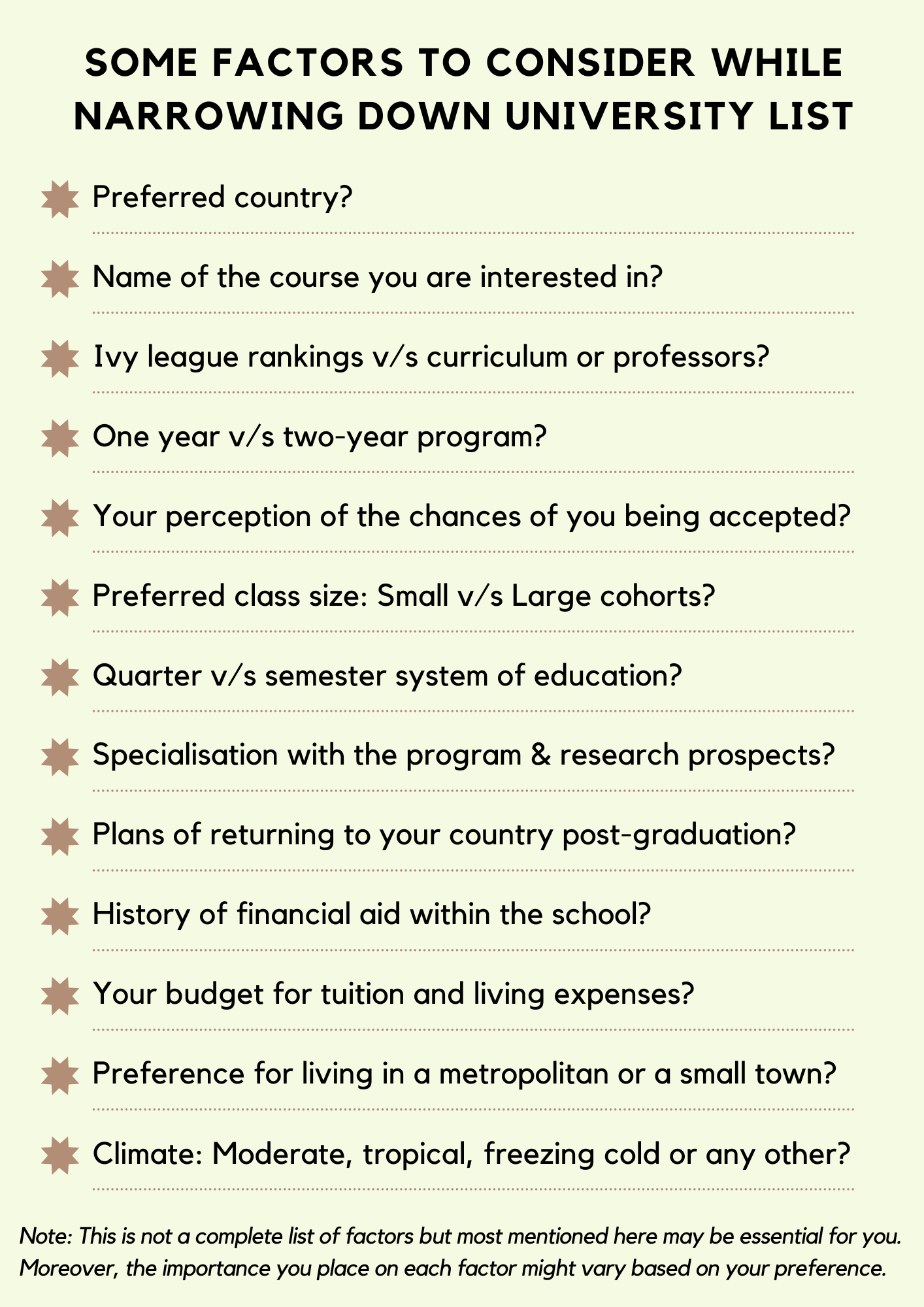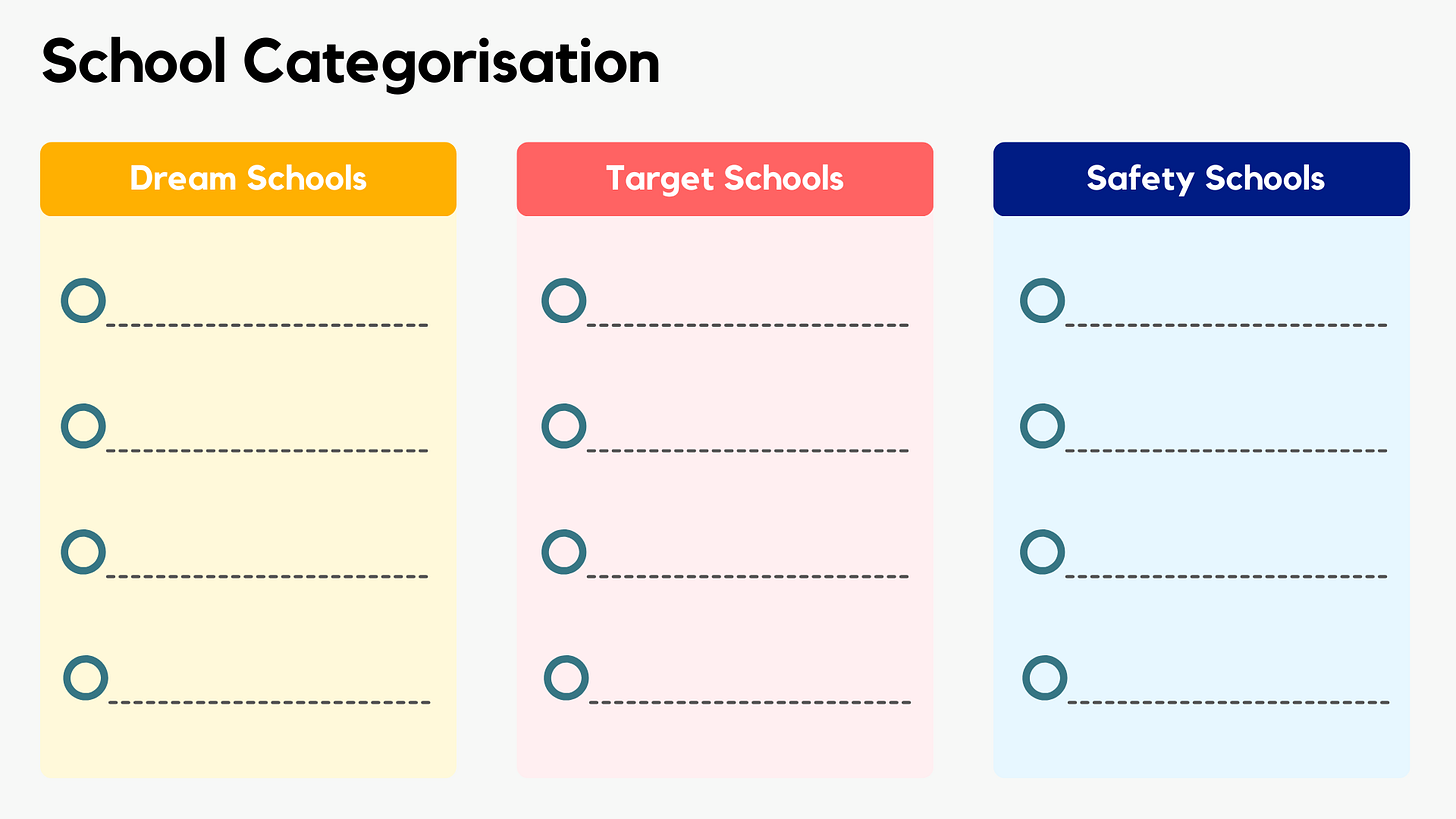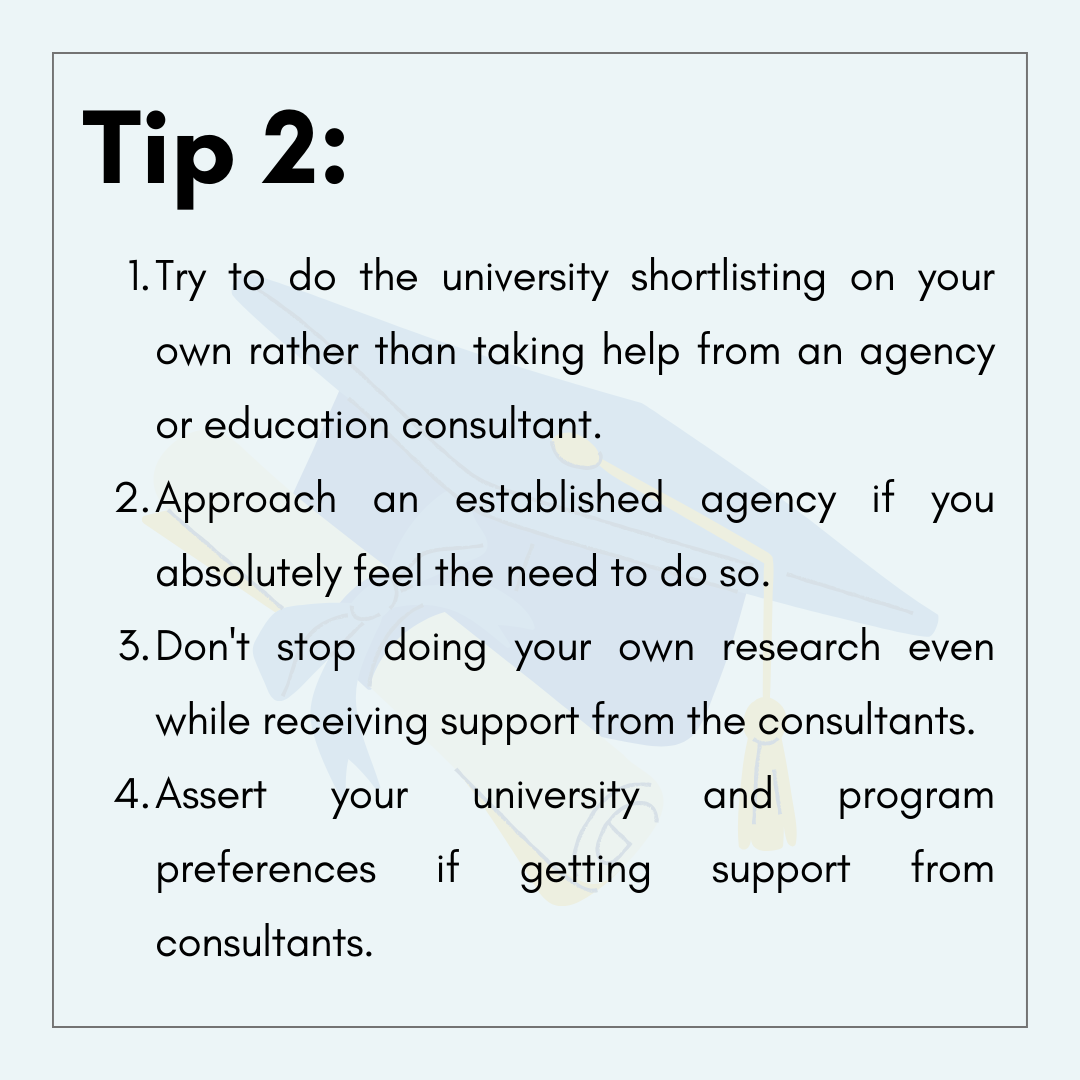Finding Universities
How to begin thinking about your higher education destination while balancing your dreams and reality?
The last article elaborated on identifying your reasons and motivation to pursue higher education abroad. Once you have identified your goals, we will backward map the universities and their respective application processes to ensure you can achieve them.
Envision your dream
When making the initial list of universities, be as prodigal as possible. Don't let anything hinder you. If you feel like including Harvard or Oxford as your dream universities, put them on the list. There is no harm in identifying these potential institutions. Don't consider factors like application length, standardised test requirements, or application fees at this stage.
In the second stage, we will downsize this list based on your practical situation, strong preferences for specific educational environments, and your perception of the likelihood of acceptance into each university.
Start collecting as many options as possible to make your dream a reality. Begin this process as early as you can. Ideally, if you aim to complete your applications by December 2023, start the process in January of the same year. However, practically speaking, starting in July is not a bad time either. Keep in mind that you may need to manage multiple tasks simultaneously and prioritise accordingly.
You can utilise the following resources to search for universities:
Carnegie Classification of Institutions of higher education: This website is best for universities in the US. Website: https://carnegieclassifications.acenet.edu/institutions/
US News: Contrary to its name, this website is a great source for searching universities globally. Website: https://www.usnews.com/education/best-global-universities
There are other websites like QS, Top universities, etc., which you can explore as well. However, don't rely solely on university rankings.
Additionally, reach out to your peers, mentors, professors, or managers for guidance. Often, seniors or juniors from your alumni network may attend the universities you are considering. While some may not respond, others will be happy to help. For example, during my search for behavioural sciences and public policy courses, I came across a few profiles on LinkedIn from the University of Warwick, a place I hadn't considered previously based on a quick search.
You can also use LinkedIn to see where your direct or mutual connections have studied, based on the career path you want to pursue. For instance, if you aspire to work at McKinsey and notice that many employees come from Wharton, Booth, HBS, or INSEAD, you can take that into account.
Factoring in the reality
While you may have created a dream scenario, we all know that there are certain practical elements that one needs to consider when shortlisting institutions.
Once you have a rough list, you can start downsizing by asking yourself the following questions:
It's important to note that each person may prioritise different factors. For example, person X may not care about the climate but desires a top-ranked university. They might be open to studying in Boston, Chicago, or even Oxford. However, person Y may be uncomfortable with cold climates and would prefer warmer regions, even if it means compromising on the university's ranking.
Remember, university brand name and ranking are not everything. There are instances where individuals have been accepted into both Harvard and Georgetown University with similar financial aid packages but chose Georgetown because its curriculum and professors were better aligned with their career goals.
In my case, I initially shortlisted about 20 universities worldwide, including those in Eastern Europe, the USA, Australia, and Singapore. I considered factors such as program name, faculty, curriculum, and the university's peer and alumni community to enhance my learning experience. Through this process, I narrowed it down to 9 universities. However, I ended up submitting applications to only 5 of them.
Always consider your own preferences and goals when making these decisions. It's essential to find the right fit for your individual needs and aspirations.
Dream, Target and Safety
Once you have your preliminary list ready, considering various factors, you can divide the universities into three categories: Dream, Target, and Safety schools.
The Dream category will include colleges that you would love to attend, with a few stipulations such as receiving financial aid and being accepted into your preferred course. Keep in mind that many colleges ask for a preference list of courses, so if you don't get into your first choice, they may consider you for the next option.
Target Schools will comprise universities that are competitive in terms of curriculum and would be a comfortable fit for you. These schools may also be affordable, located in decent areas, and aligned with your specialisation.
Safety schools will consist of institutions that you would be happy to attend if you don't get into your dream or target schools. These are places with a higher acceptance rate for students of your calibre and profile. While they may not be highly ranked like target schools, you wouldn't feel disappointed attending them.
You can use the following template
Note: “Safety” category should not include schools that you feel you’ll forcefully attend if you don’t get accepted to your program of choice in dream or target schools.
To go with an education consultant or not?
There are numerous agencies, both big and small, that assist you throughout the college application process, right from university selection to program choices. Many of them even offer their services for free. While it may seem enticing, I would not recommend approaching these established education consultants.
Personally, I approached three different consultancies two or three years ago, and my experience was not very positive. Instead of conducting a comprehensive profile evaluation and interest mapping, they immediately informed me that my profile was not eligible for selection as a public policy student, even at a tier 3 school in Canada. I also noticed that these consultants tended to impose their thoughts on me rather than listening to my own educational aspirations.
Based on anecdotal evidence, I have also observed that their process of shortlisting universities can be quite mechanical. Moreover, since they handle multiple clients, your unique and well-crafted application may not be their top priority.
Therefore, I would suggest taking on the bulk of the work yourself. I understand it can be challenging, but at the end of the process, you will gain a high level of confidence, regardless of the application results. However, I also recognize that not everyone may possess the knowledge or experience to navigate this process independently and may require substantial assistance. Some individuals may not even have access to a community that can provide guidance and support throughout the process.
If you genuinely feel the need for an education consultant, then go ahead and make use of their free services. However, keep in mind that there is no such thing as a free lunch. There will likely be a trade-off involved. And if you do choose to work with a consultant, continue to assert your preferences and interests regarding the program and place of study.
Key Takeaways: What’s my point?
In the first stage of the university list, do not be conservative: list down every possible university you may be interested in.
Take a break and then go into the second stage where you ask yourself several questions and factor in the variables which are important to you. Some factors may be more important for you than others. Every person may place a different level of importance on each factor for university selection.
You do the brunt work on your own than going to a consulting service. If you feel the need to approach an agency, do so but don’t go by their strategy blindly. Continue to do your research work about the university and assert your preferences in the selection process.
Categorise your schools into dream, target and safety schools. Do not include safety schools that you won’t be comfortable attending if you don’t get accepted to your dream or target universities.
What’s Next?
In the next article, we’ll touch upon a very important step of listing down potential recommenders. I’ll be answering questions on:
How you should select the recommenders? Do their credentials matter more or the quality of your engagement with them?
How many academic or professional recommendations to select?
How to decide which recommender should write for what university?
and many more such quandaries!





